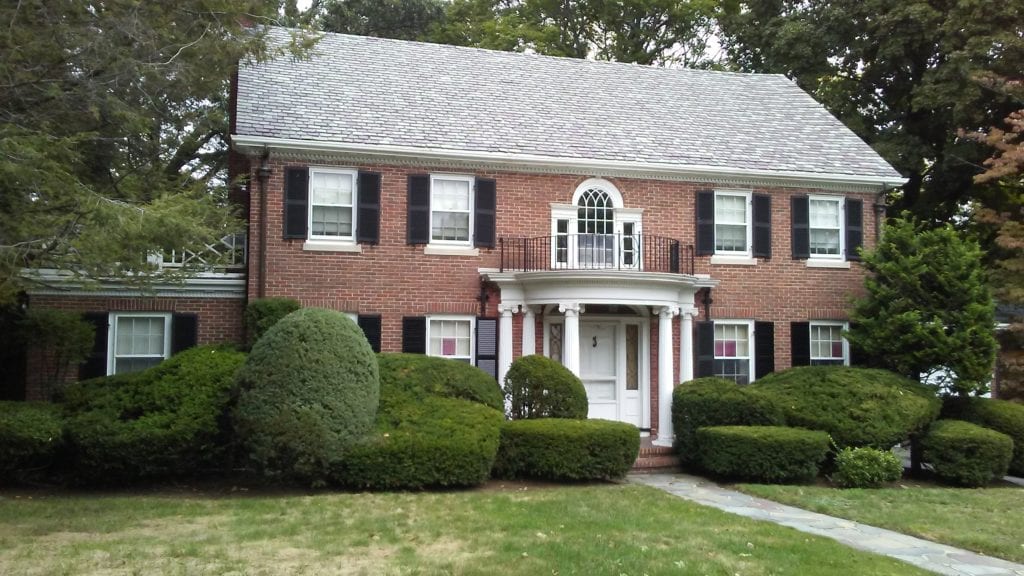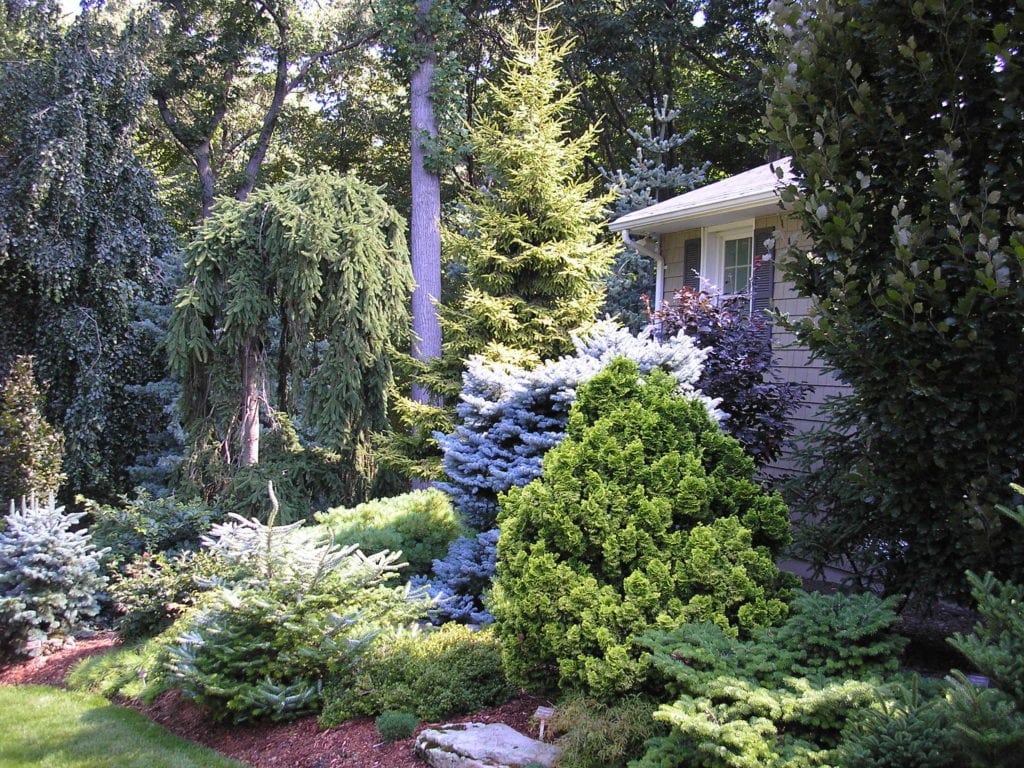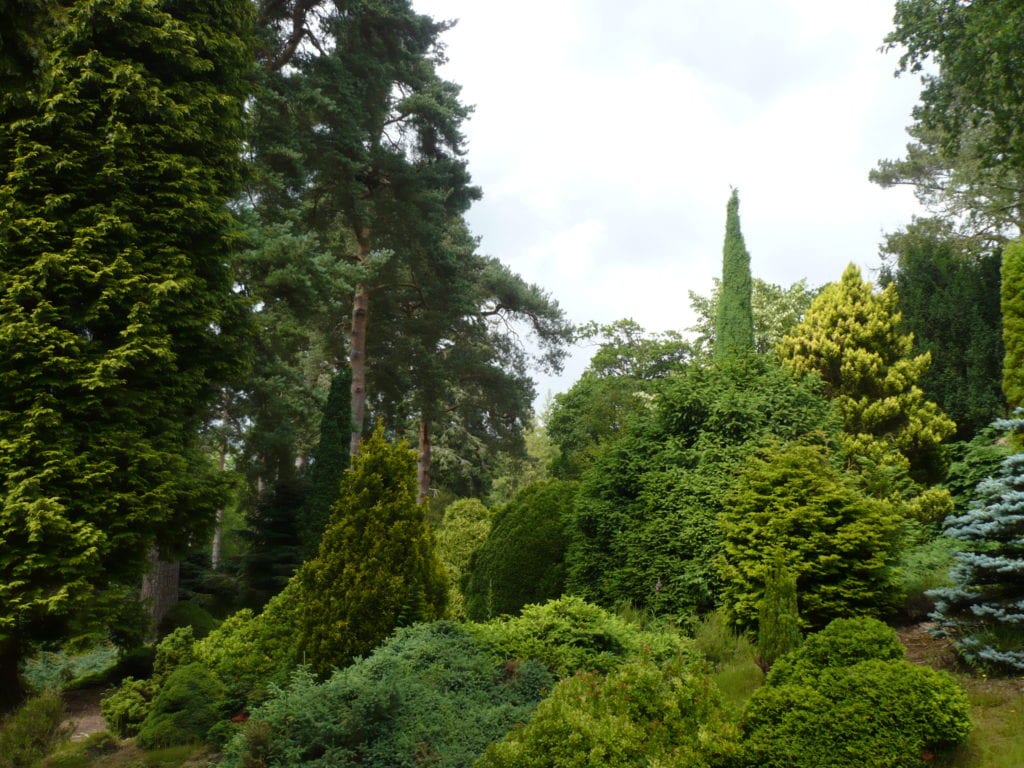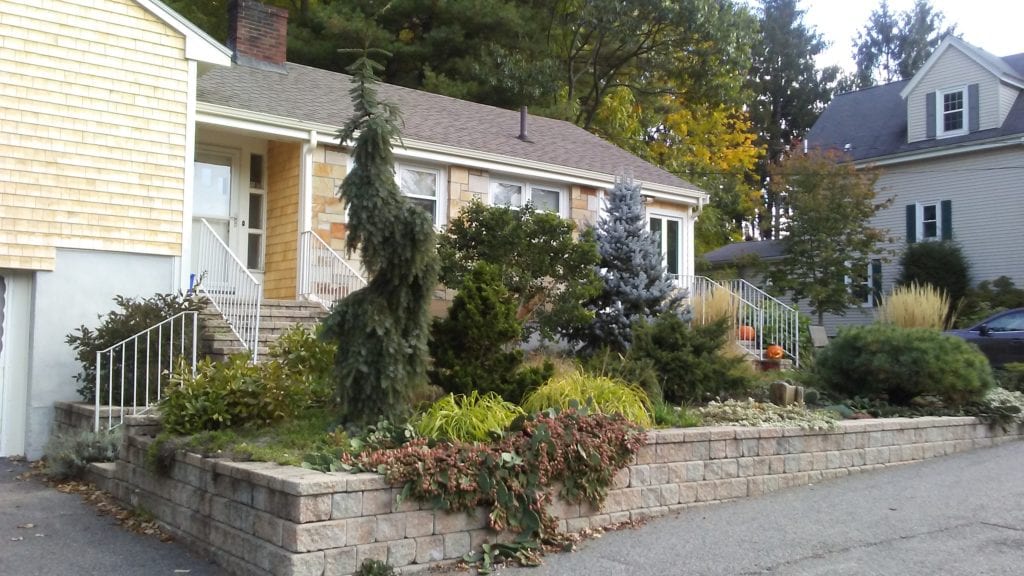by Christie Dustman
I couldn’t help but notice what plants did well this summer during and after the horrendous drought. You named it – conifers!

Yews and conifers held up well in this summer’s heat and droughty conditions, but they don’t have to be “green blobs.”
If you looked around while driving, you may have seen what I saw – Pieris, Rhododendrons, Azaleas, Hydrangeas, and the almost indestructible burning bush looking pretty sorry this summer in front yard plantings. However, the Yews and other conifers looked just fine.
Secretly I am happy that my BFFs in the garden, the conifers, did so well. Maybe now they will get more deserved attention – not only for “winter interest” but for year round interest and as drought tolerant crusaders.

Almost entirely conifers, this garden reads as varied, dynamic, and interesting.
So often I think to myself, “Okay, drought tolerant plants: sedum, sedum, grasses, grasses, Opuntia (cacti), sedum, sedum….” What happens in a world where even sedums and grasses looked stunted? Well, we saw them this summer. Even I, a devout conifer lover, didn’t think about conifers as a saving grace for future landscapes.

Conifers provide structure and a full composition.
As a designer, I want to plant plants that will flourish and not require intensive inputs like water or maintenance for years to come. I am starting to realize that conifers can fit the bill on both accounts – low water requirements and low maintenance. But how can I interest you all in conifers when what comes to mind is what is in the top photo – green blobs.

A small urban garden showcases conifers and Opuntia.
What I want to posit is that there is a full complement of coniferous plants that can serve the function of perennials, shrubs, and small trees in a garden and offer dynamic seasonal interest – without being a woody shrub or herbaceous perennial. And using conifers to build out a full garden brings down the maintenance requirements and water requirements. What more could you ask for?
About the Author
Christie Dustman is a nationally certified landscape designer with nearly two decades of experience. Christie is the founder and principle at Christie Dustman & Company, an award-winning firm that values innovative design, practical solutions, and expert plant care. With an experienced team of professionals, the firm offers a wide range of expertise in garden design, installation and maintenance. Christie has a passion for conifers and often incorporates them into her designs as living sculptures. Christie’s study of creative design, expert pruning, and garden maintenance includes training from The Landscape Institute at the Boston Architectural College, UMass Extension’s Green school, and countless educational seminars including in Japan. Christie has a gift for keen listening and tailors every project to the needs and taste of her clients. Christie holds the following certifications: Massachusetts Certified Landscape Professional (MCLP); Certified Organic Land Care Professional (AOLCP); Nationally Accredited Professional Landscape Designer (APLD); and Massachusetts Certified Horticulturist (MCH).
Each author appearing herein retains original copyright. Right to reproduce or disseminate all material herein, including to Columbia University Library’s CAUSEWAY Project, is otherwise reserved by ELA. Please contact ELA for permission to reprint.
Mention of products is not intended to constitute endorsement. Opinions expressed in this newsletter article do not necessarily represent those of ELA’s directors, staff, or members.

